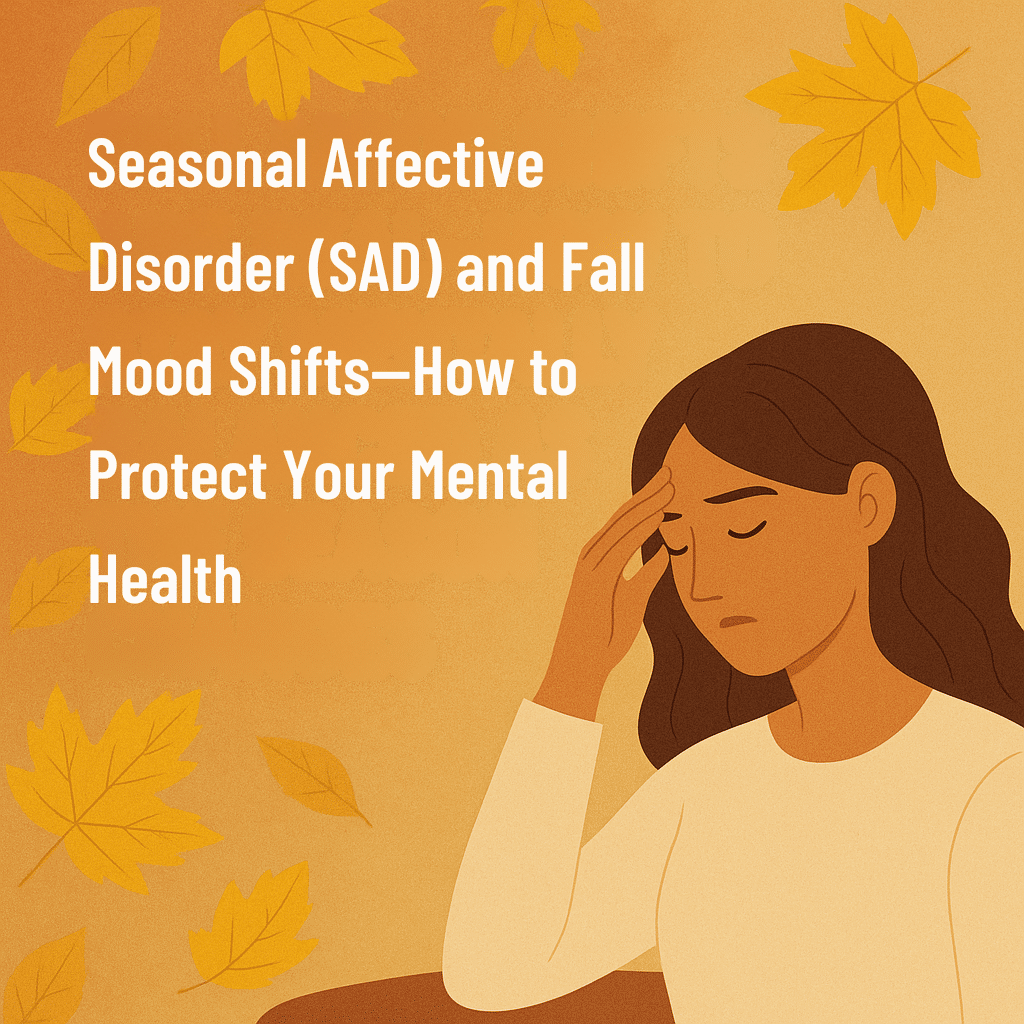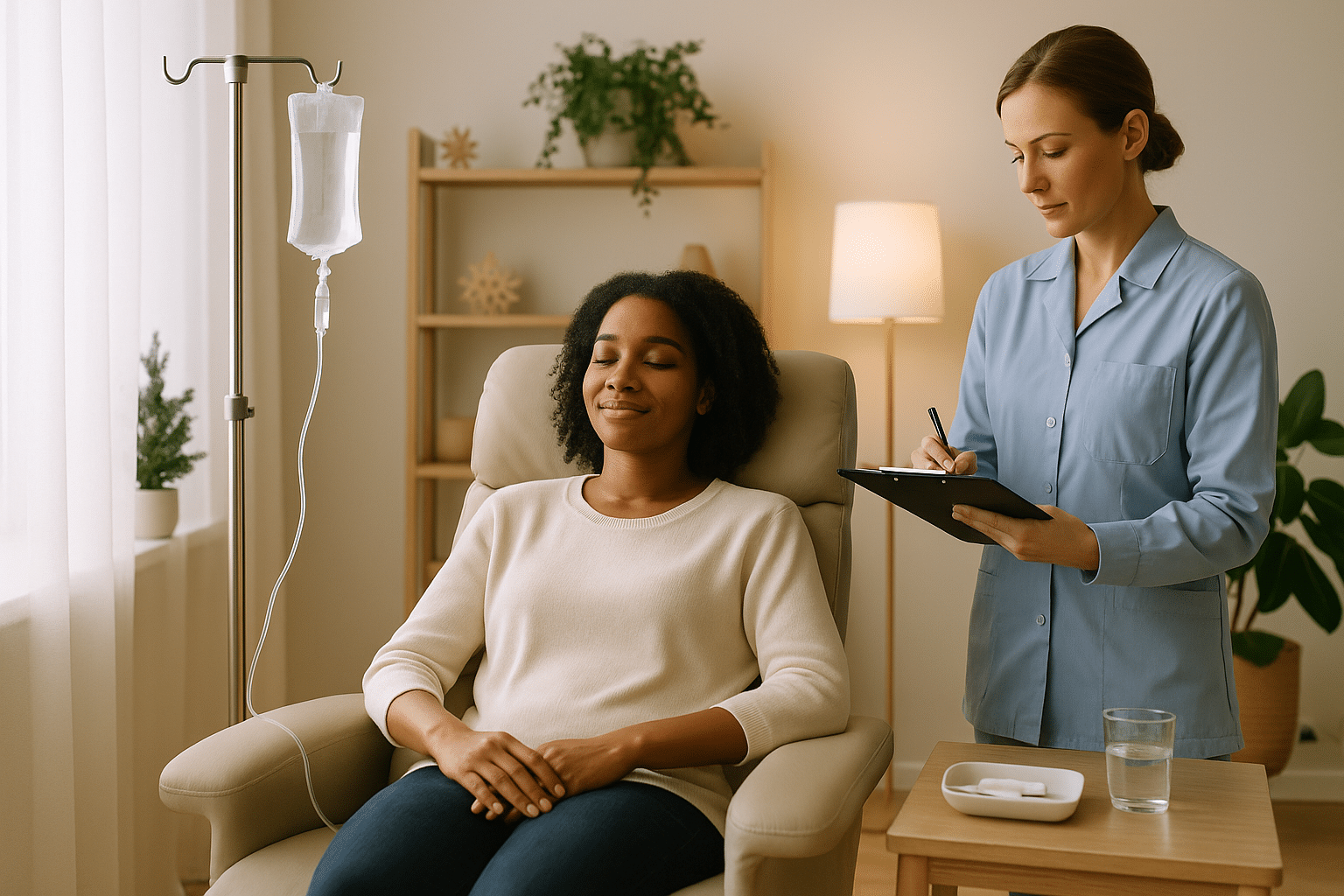Every year it happens. The sun fades earlier, the mornings feel colder, and suddenly your mood doesn’t feel the same. Some people shrug it off as “just fall.” But for others, it hits harder. You might notice you’re dragging, sleeping too much, or snapping at people you usually get along with.
That’s not weakness or laziness but a mix of biology, sunlight, and daily rhythm working against you. For some, these shifts are mild, what people casually refer to as the “winter blues.” But for others, it’s something deeper, a condition called seasonal affective disorder (SAD).
So, how do you tell if it’s just a seasonal slump or something that really needs attention? And what can you do in the meantime to keep your balance?
How Shorter Days Influence Mental Health
Your body runs on an internal clock known as the circadian rhythm. It takes its cues from sunlight. As days shorten, the clock gets thrown off. And once it’s off, so are you.
Here’s what happens:
- Serotonin drops: This is the brain chemical that helps regulate mood. Less sunlight means less serotonin activity, a recipe for low mood.
- Vitamin D declines: Sunlight triggers vitamin D production, and vitamin D helps regulate serotonin. Without it, your mood has less support.
- Melatonin spikes: The darker it is, the more melatonin your body produces. That’s fine at bedtime, but in fall and winter, your brain can pump out too much.
And then there’s daylight savings time. More than 55% of Americans report feeling tired after the time shift, and research links it to higher risks of depression, anxiety, and even car accidents in the days after.
The loss of daylight and the clock change affect your body chemistry.
Recognizing the Signs: Normal Shifts vs. Seasonal Depression
Feeling sluggish when the days get shorter is common. However, when does it become a bigger issue?
About 5% of U.S. adults have SAD every year, and another 10–20% face milder winter blues. Women are four times more likely to experience it, and it typically first appears in young adulthood.
SAD isn’t just “feeling down.” Symptoms include:
- Sleeping too much and still feeling drained
- Constant carb cravings and weight gain
- Withdrawing from friends or skipping hobbies
- Hopelessness or guilt that lingers
- Trouble concentrating, even on simple tasks
- In serious cases, thoughts of death or suicide
These symptoms often stick around for four to five months. That’s the difference between normal mood changes and a depressive disorder.
The Hidden Link Between Fall Stress and Anxiety
Besides depression, anxiety can creep up, too. Fall often means new school schedules, work projects ramping up, and holidays approaching. Stress is baked into the season.
There’s also a biological layer. The immunoseasonal theory suggests our immune system shifts in fall and winter. More inflammation, less balance. Inflammation can worsen symptoms of both depression and anxiety.
Clinicians even use the phrase “autumn anxiety.” It makes sense because restlessness, racing thoughts, and irritability all seem to spike this time of year. If that sounds familiar, searching for an anxiety treatment near you might be worth considering before the season gets heavier.
Lifestyle Strategies to Stay Balanced
Not everyone needs clinical care right away. There are smaller things you can do that sometimes make a big difference.
- Get outside: A Swedish study tracked more than 15,000 people. Those who spent at least one hour in daylight during winter were 28% less likely to report depressive symptoms. However, this was based on self-reports. People aren’t perfect at tracking mood or time, so the results aren’t flawless, but the trend is clear.
- Exercise: Movement balances chemicals and improves sleep. Even 20 minutes of brisk walking helps.
- Stick to a routine: Going to bed and waking up at the same time stabilizes your circadian rhythm.
- Eat smart: Sugar highs and crashes don’t help mood. Alcohol, same story.
- Practice mindfulness: Simple breathing exercises or journaling can pull your mind back from spiraling.
When Lifestyle Isn’t Enough: Evidence-Based Care Options
Sometimes the basics, like walks, sleep routines, and healthier meals, only go so far. That doesn’t mean you’ve failed; it just means your brain may need more support. Doctors often recommend light therapy, using a lamp that mimics daylight, or Cognitive Behavioral Therapy (CBT), which helps untangle thought patterns and build coping skills.
For some, antidepressants bring relief, especially when paired with light exposure. And if blood tests show a deficiency, even something as simple as adding vitamin D can help stabilize mood through the darker months.
If symptoms are stronger or keep coming back, it may be time to connect with a mental health clinic in Sacramento that can offer therapy, psychiatry, and advanced options under one roof.
Exploring Advanced Options: Ketamine and Spravato
Traditional antidepressants can take weeks to work. That’s tough if you’re in the middle of a heavy depressive episode. Ketamine offers a faster option. Some people notice relief within hours or days.
Spravato, a nasal spray form of esketamine approved by the FDA, is designed for treatment-resistant depression. It’s not a magic fix, but for patients who’ve tried multiple medications with no success, it can be a turning point.
At Zeam, ketamine treatments aren’t done in isolation. They’re combined with therapeutic support, sometimes in ketamine-assisted psychotherapy, to help process insights and build real change. For people stuck in cycles where nothing else works, this advanced depression treatment can be life-changing.
Stay Proactive: Seek Support Before Symptoms Worsen
If your mood has dipped every fall for the past few years, it probably won’t just go away next time. Patterns repeat.
Depression and anxiety are treatable, but ignoring symptoms makes them harder to manage. Early support keeps things from getting worse. Even one consultation with a therapist or psychiatrist can clarify whether you’re dealing with a normal seasonal dip or something that deserves more structured care.
At Zeam, we offer therapy, psychiatric care, and ketamine treatment in Sacramento, Folsom, and Roseville. Reach out today, and we’ll walk that first step with you and help you find your balance this season.
Key Takeaways
- Seasonal affective disorder (SAD) affects about 5% of U.S. adults each year, with another 10–20% experiencing milder “winter blues.”
- Shorter days disrupt the circadian rhythm, lowering serotonin, reducing vitamin D, and increasing melatonin — all of which can influence mood.
- Daylight savings time shifts affect more than 55% of Americans, often causing fatigue, depression, and anxiety in the days that follow.
- Research links inflammation and immune changes in fall and winter to higher risks of depression and anxiety (“autumn anxiety”).
- Evidence-based treatments include light therapy, cognitive behavioral therapy (CBT), antidepressants, and vitamin D supplementation when deficiencies are present.
- Advanced options like ketamine and Spravato (esketamine) may provide faster relief for treatment-resistant depression, with benefits seen within days rather than weeks.
References
- American Academy of Sleep Medicine. Sleep Prioritization and Daylight Saving Time Survey Results. Link
- Cleveland Clinic. Seasonal Depression (SAD): Symptoms & Treatment. Link
- Clinical trial review: Ketamine and Esketamine in Treatment-Resistant Depression. Journal of Clinical Medicine. Link
- Pan, K. et al. Immunoseasonal Theory and Mental Health Outcomes. Science of the Total Environment. Link




